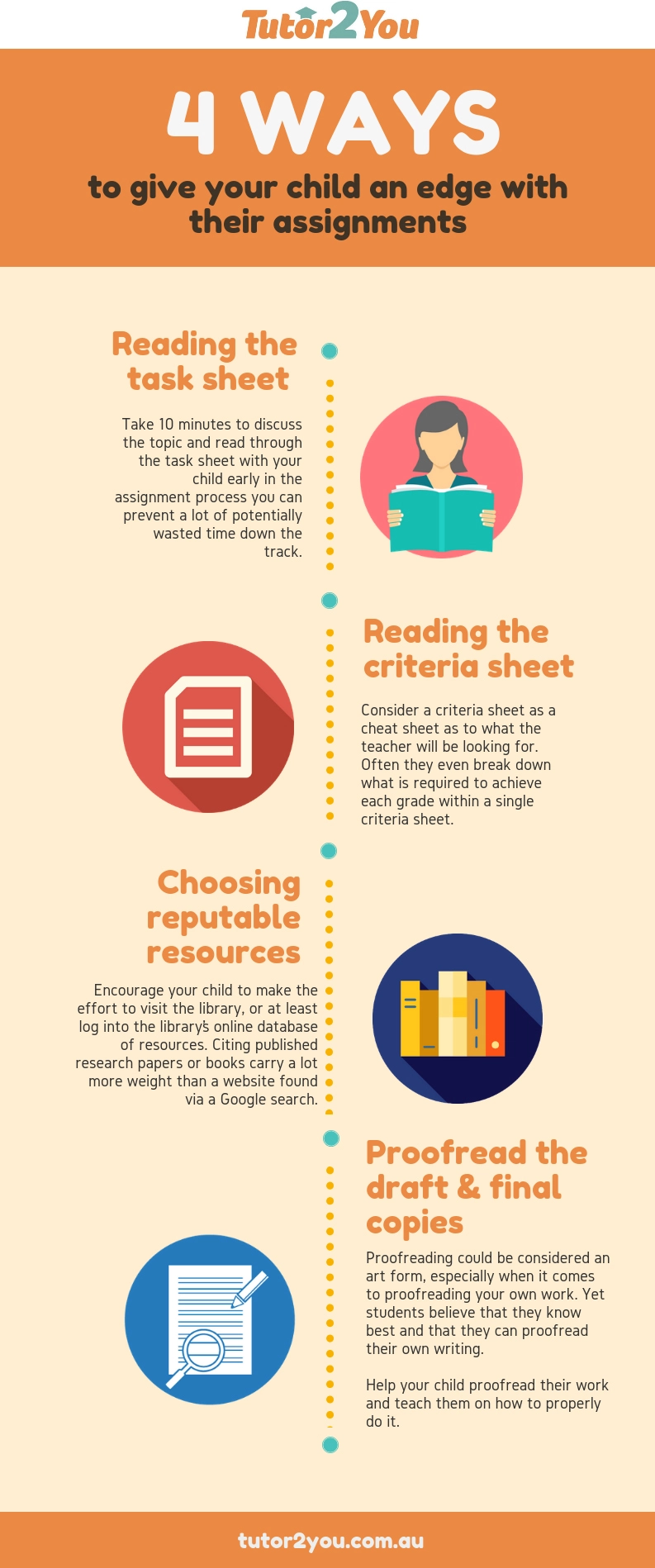
4 Ways To Give Your Child An Edge With Their Assignments
At this stage of the term often many students are in the process of preparing assignments. There are lots of things that parents can do throughout the assignment process that can have a huge impact on the final result.
Tutoring thousands of students every week we have noticed that there are a few common issues that students often have that stand out above the rest.

1. Reading The Task Sheet
It is quite incredible how often students don’t have a solid understanding of what the task or topic is, what they are meant to write or discuss, and how they are meant to do it. By taking 10 minutes to discuss the topic and read through the task sheet with your child early in the assignment process you can prevent a lot of potentially wasted time down the track. But before you think, surely they are old enough to know what to do by now, think again, even University students don’t always get this right.
There is no harm in offering a second opinion before your child rushes off to get their research done because there is nothing worse than doing a lot of work just to realise you were looking into the wrong topic.
2. Reading The Criteria Sheet
The criteria sheet is often overlooked, normally hidden at the end of the task sheet (or in some cases the bottom of the school bag). The criteria sheet is the most important element of an assignment besides the task itself, and yet very few students ever bother to read it. Consider it a cheat sheet as to what the teacher will be looking for. Often they even break down what is required to achieve each grade within a single criteria sheet. For example;
Criteria – Well documented research
A – Use 7 reputable cited and quoted resources
B – Use 5 reputable cited and quoted resources
C – Use 3 reputable cited and quoted resources
etc…
3. Choosing Reputable Resources
As the online world grows, students are more often looking for research shortcuts, opting to utilise the Wikipedia‘s of the world for their background research and to back up their opinion, only to realise they need ‘real’ references at which point they find a book in the library loosely based on their topic, which they never read but throw it into their reference list anyway.
If a research assignment doesn’t contain direct quotes that are used to back up assumptions, findings, or opinions within the assignment, the research is likely poor. Encourage your child to make the effort to visit the library, or at least log into the library’s online database of resources. Citing published research papers or books carry a lot more weight than a website found via a Google search.
4. Proof Read The Draft & Final Copies
A famous copywriter once said, "Keep taking words out until it stops making sense."
Proofreading could be considered an art form, especially when it comes to proofreading your own work. Yet students believe that they know best and that they can proofread their own writing. While they will often be able to identify the odd error here or there, far too often it is difficult to separate what they think the assignment says, and what it really says.
It is very easy to gloss over and miss minor errors that will take the assignment to that next level.
Final Thoughts:
Just these 4 steps alone will help propel your child’s results upwards. Help them by ensuring that their time is spent effectively, answering the right question, using the correct resources. If you would like help from one of our specialist English Tutors why not click here and enquire today.


